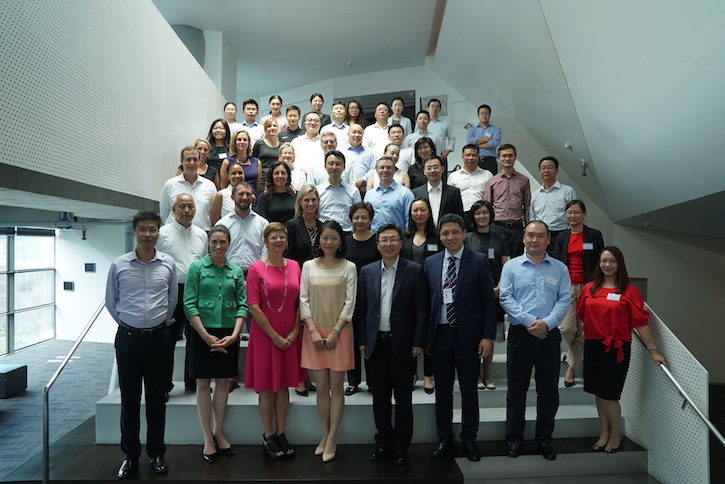By Dorinda Elliott

Representatives from China’s top private companies joined some of its most influential state-owned enterprises, along with top U.S. high-tech leaders, retailers, automakers, and hoteliers last week in Shenzhen for a common purpose: to help drive China’s move toward building more sustainable cities and, ultimately, a low-carbon economy.
The gathering was a working-level meeting of the PI/CCIEE CEO Council for Sustainable Urbanization, a unique group of U.S. and Chinese CEOs invited by Institute Chairman Hank Paulson and former Vice Premier Zeng Peiyan to join forces in late 2014. Together with partner CCIEE, the Council collaborates on projects that could become national models for sustainable economic growth. For anyone rooting for stronger U.S.-China relations, or for China’s efforts to push for a cleaner environment, the meeting pointed to encouraging evidence that businesses can work together for a greater cause that also makes great business sense.
Some 50 executives from the Council’s 18 companies traveled from across China and the United States to attend the meeting. Since the CEO Council’s inception, U.S. and Chinese member companies have been working on projects that combine U.S. green technology with Chinese scale.
At the meeting, which was facilitated by project consultant KPMG, the executives discussed green cities, including energy-efficient buildings, green supply chains, factory efficiency, and communications strategies to raise awareness of sustainability among the Chinese public. At real estate developer Vanke’s award-winning, super-green headquarters, a LEED Platinum building designed by Steven Holl, executives from CSCEC and China Development Bank, both huge state-owned enterprises, presented plans for new energy-efficient, human-centric urban communities. CSCEC offered up several upcoming “future city” projects for potential collaboration.
The key will be defining clear concepts of sustainability for future collaborative CEO Council projects. China Development Bank presented 18 “green and smart” guidelines, developed together with Energy Foundation China, to promote better cities from the environmental, economic, social, and cultural perspectives. And Paulson Institute Managing Director Kevin Mo stressed the importance of definitions and metrics to determine how green a building really is.
The meeting also included working-group discussions on sourcing sustainable forestry products (led by Apple, which has extensive resources management programs, and Vanke, which has implemented stringent wood procurement policies); a renewable energy initiative to explore electric vehicle charging; factory efficiency (led by Walmart, which is helping its suppliers implement a comprehensive tool to gauge factory efficiency); and a potential communications initiative aimed at raising awareness of sustainability.
The Council’s goal is a big one—for U.S. and Chinese businesses, working together with government and NGOs, to lead the way in developing innovative solutions for China’s sustainability challenges. What separates this council from many others is that it is action-oriented. So the attendees bridged language and cultural differences, from state-owned to private-owned, American to Chinese, to map out constructive ways to work together. After the meeting, attendees noted the many opportunities that emerged from discussions with such unlikely partners. Armed with best practices, green technologies, and the right government policies, its members hope to help clean up the environment, one project at a time.


